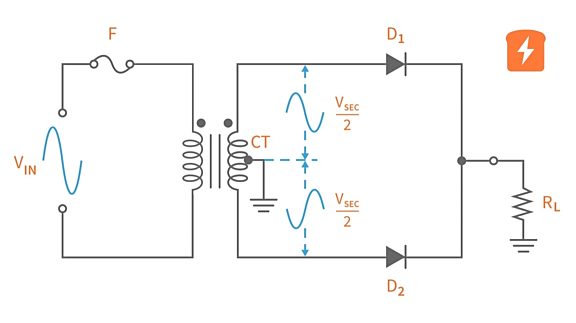What is my transformer output with no load?
Published
We've done several projects using this VPS24-5400 transformer in the past. Yet, when there is no load, this transformer that is rated for 12V or 24V will output a voltage that is significantly higher than expected. I want to address some of the questions people may have regarding transformer output variations. By examining the technical aspects and specifications outlined in the datasheet, we can better understand why discrepancies occur between expected and measured output voltages.

First, let's address the setup.
In our case, the VPS24-5400 is set up in parallel, providing us with a nominal 12 volt output. However, when measured, a multimeter reads the RMS voltages as 13.5V. Using the RMS setting on an oscilloscope, the measured voltage is even higher at 13.9V. In this particular case, neither form of measurement yields the expected 12V and, in some cases, the voltage can even be considerably higher - upwards of 16-18V. So why is this the case?

Two primary factors contribute to these variations:
1) Input Voltage Fluctuations: The transformer is designed for a nominal 115VAC input to provide a 12VAC output in parallel configuration. However, actual measurements reveal deviations from this expected value.

Analysis using a multimeter and oscilloscope indicates input voltages ranging between 118.5V and 120V, surpassing the specified 115V. According to transformer theory, higher input voltages lead to proportionally higher output voltages due to the turns ratio. However, a variation of only 5 volts on the input, with a 1:10 ratio, shouldn't yield a significant difference on the output. This leads to the second item to consider.

2) Load Conditions: Another crucial aspect affecting output voltage is the presence or absence of load. In our current measurements, they are conducted under no-load conditions using high impedance sources, which deviates from real-world usage scenarios.

Datasheet specifications fo the VPS24-5400 indicate that the transformer's optimal performance, yielding a 12-volt output, is achieved under a specific load condition of 10.8 amps at 115V input. Furthermore, voltage regulation, as outlined in the datasheet, indicates a 25% typical variation from full load to no load.

Unlike power supplies found in laptops, transformer-only systems exhibit inherent variations in voltage regulation. While certain power supplies offer precise voltage outputs across a wide input voltage range, transformer-based systems necessitate a nuanced understanding of their operational parameters.
When looking at a laptop power supply, it may accept anywhere between 100V and 240V as an input, and it'll provide almost exactly 14VDC. While the manufacturer of this particular transformer, Triad Magnetics, makes things like that, that is not the performance expected from an transformer without further circuitry. When you're using a transformer, you need realistic expectations of what the output will look like. To further stabilize and hone in on an exact voltage, additional circuitry will be required to regulate it. For more information about the further steps that can be used after a transformer to further refine the output, please see our tutorial on half-wave rectifiers and how they can be used in power supplies.
Understanding transformer output variations requires a thorough examination of datasheet specifications, load conditions, and realistic expectations. Deviations from specified parameters warrant further investigation, while adherence to datasheet guidelines ensures optimal performance.
Hopefully you found this explanation helpful and that it clears up a few important questions about transformers. If you have not done so already, you can watch the video at the top of the page for further information and a live demonstration of the measurements.

Get the latest tools and tutorials, fresh from the toaster.














